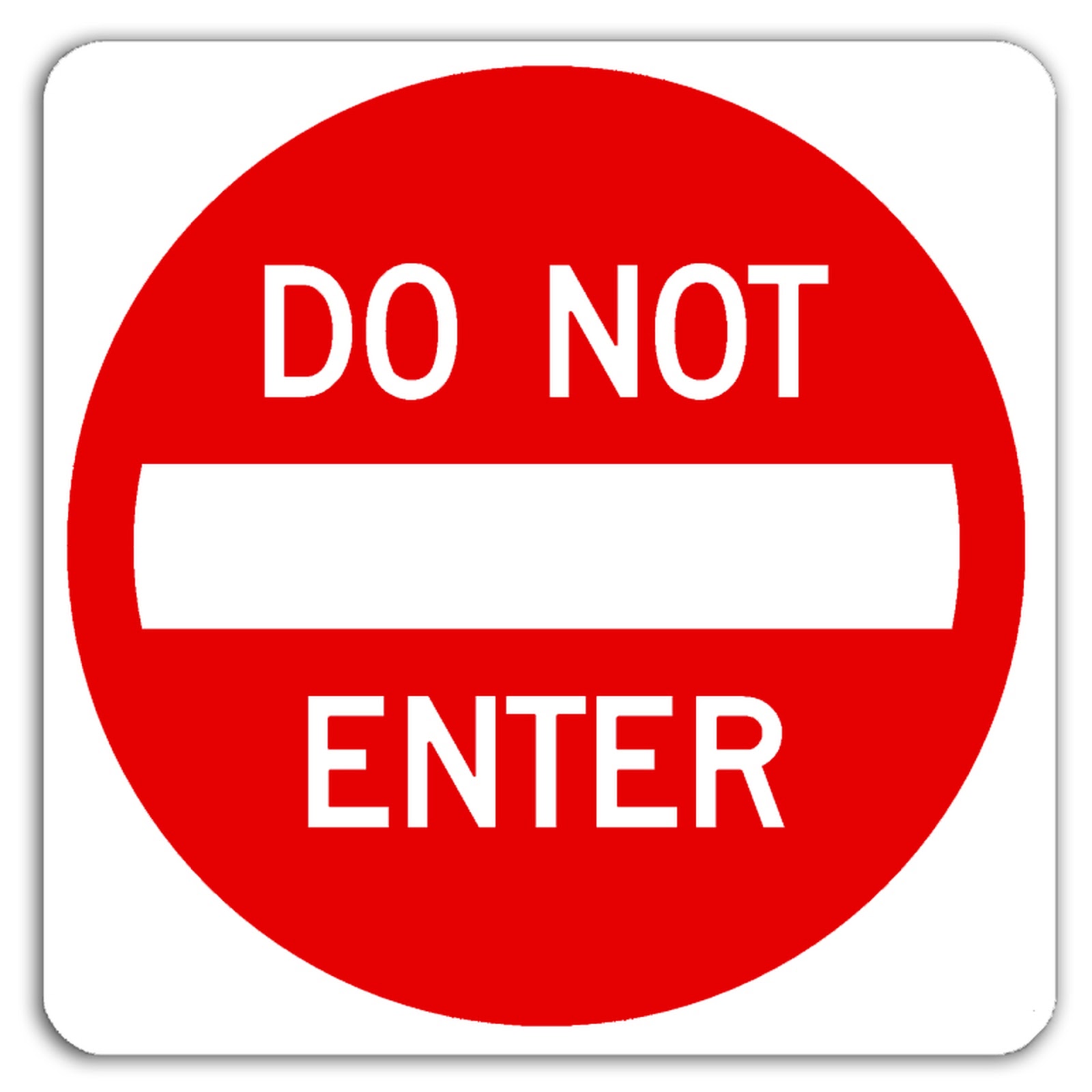The Psychology Behind “Do Not Enter” Signs: Do Not Enter Sign For Bedroom Door

“Do Not Enter” signs are more than just simple instructions. They carry a powerful psychological impact, influencing our behavior and emotions. The presence of such a sign creates a barrier, instantly triggering a sense of curiosity and a desire to understand the reason behind the restriction.
Curiosity and Desire to Enter
The most immediate effect of a “Do Not Enter” sign is to spark curiosity. Humans are naturally inclined to explore the unknown, and a forbidden area becomes inherently more appealing. The sign acts as a psychological trigger, amplifying our desire to know what lies beyond the barrier. This is especially true when the sign is placed in a context where we expect open access, such as a bedroom door. The very act of forbidding entry creates a sense of intrigue, making us want to discover what is being hidden.
Creating a Sense of Mystery
“Do Not Enter” signs often create a sense of mystery. By restricting access, they imply that something special, unique, or potentially dangerous is hidden behind the door. This sense of mystery can be both alluring and unsettling. The unknown becomes a blank canvas onto which our imagination can project a range of possibilities, from exciting adventures to terrifying secrets. The ambiguity of the sign leaves room for our own interpretation, making the forbidden area even more captivating.
Practical Uses of “Do Not Enter” Signs in Bedrooms

While “Do Not Enter” signs are often associated with public spaces or restricted areas, they can also serve practical purposes in bedrooms, particularly in households with multiple people or specific needs.
These signs can help establish boundaries, create a sense of privacy, and prevent disturbances, all of which contribute to a more comfortable and harmonious living environment.
Respecting Privacy and Boundaries, Do not enter sign for bedroom door
Using a “Do Not Enter” sign on a bedroom door can clearly communicate a desire for privacy and personal space. This can be particularly beneficial in shared living situations, such as college dorms, family homes, or even roommate arrangements.
For instance, if someone needs time to unwind after a stressful day or wants to focus on work or personal projects, a “Do Not Enter” sign can signal that they need a period of solitude. This helps others respect their need for privacy and avoids unwanted interruptions.
- Teenagers: A “Do Not Enter” sign can be a helpful tool for teenagers who are developing their sense of independence and need their own space. It allows them to retreat to their room for privacy, study, or simply relax without feeling constantly observed or intruded upon.
- Guests: When hosting guests, a “Do Not Enter” sign on a bedroom door can prevent them from accidentally entering a private space, especially if they are unfamiliar with the layout of the house. It can also signal that the room is off-limits for exploring or using, ensuring that belongings remain undisturbed.
Creative Interpretations of “Do Not Enter” Signs in Bedrooms
A “Do Not Enter” sign in a bedroom can be more than just a practical barrier. It can be a canvas for creativity, humor, and even a statement of personal style. By embracing design elements, humor, and artistic flair, these signs can transform a simple message into a unique and engaging element of bedroom decor.
Design Variations for “Do Not Enter” Signs
The design of a “Do Not Enter” sign can be adapted to suit a variety of themes and aesthetics. Consider the overall style of the bedroom and incorporate elements that complement the existing decor.
- Vintage Style: A distressed wooden sign with a classic font, reminiscent of an old-fashioned “Do Not Disturb” sign, could be perfect for a vintage-themed bedroom.
- Modern Minimalist: A sleek, black-and-white sign with a simple geometric design would fit well in a modern minimalist bedroom. This could involve a bold sans-serif font and clean lines.
- Whimsical & Playful: For a child’s room, a colorful sign with cartoon characters or whimsical illustrations would be a fun and engaging option.
- Nature-Inspired: A sign made of natural materials like wood or bamboo, with a design incorporating leaves, flowers, or animal motifs, could be perfect for a nature-inspired bedroom.
Incorporating Humor and Irony
Humor and irony can add a touch of personality and playfulness to a “Do Not Enter” sign.
- Sarcastic Messages: A sign that reads “Do Not Enter… Unless You Have Snacks” or “Do Not Enter… Unless You’re Cute” can be a fun and cheeky way to communicate the message.
- Humorous Illustrations: A cartoon image of a grumpy cat or a sleepy bear could be used to illustrate the sign’s message in a lighthearted way.
- Puns and Wordplay: A sign that reads “Don’t Be a Creep, Enter at Your Own Sleep” or “Do Not Enter… Unless You’re Ready to Snuggle” can be a playful way to convey the message.
Scenarios for Playful and Artistic Effects
A “Do Not Enter” sign can be used to create a playful or artistic effect in a variety of scenarios.
- Themed Party: For a themed party, a “Do Not Enter” sign could be used to create a sense of mystery or intrigue. For example, a “Do Not Enter… Unless You Have a Password” sign could be used for a spy-themed party.
- Hidden Room: A “Do Not Enter” sign placed on a door leading to a secret room or hidden area could add an element of mystery and intrigue to a bedroom.
- Art Installation: A “Do Not Enter” sign could be incorporated into an art installation as a statement about boundaries, privacy, or the nature of space.
